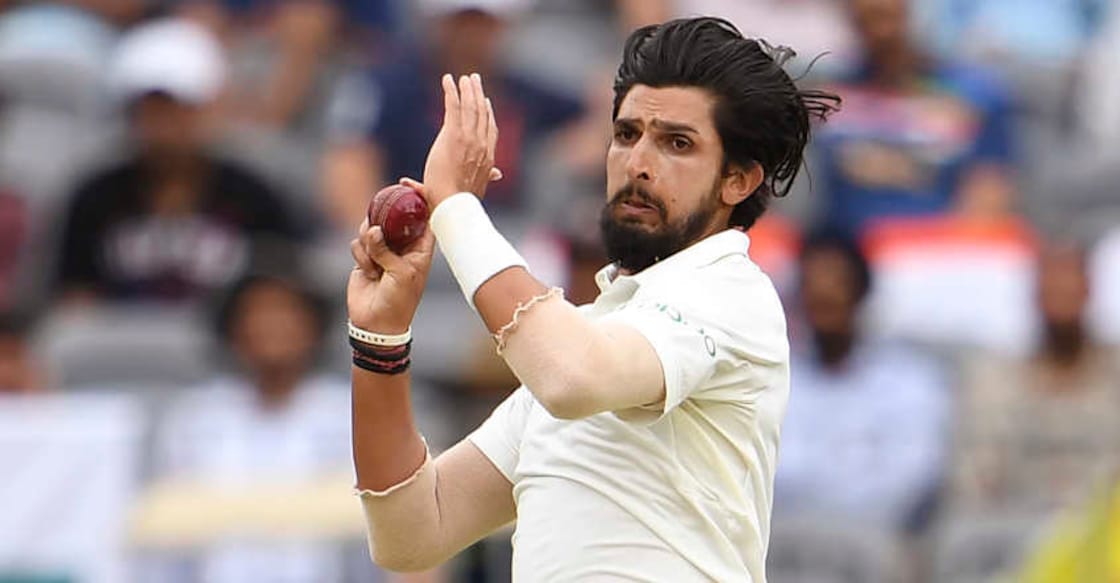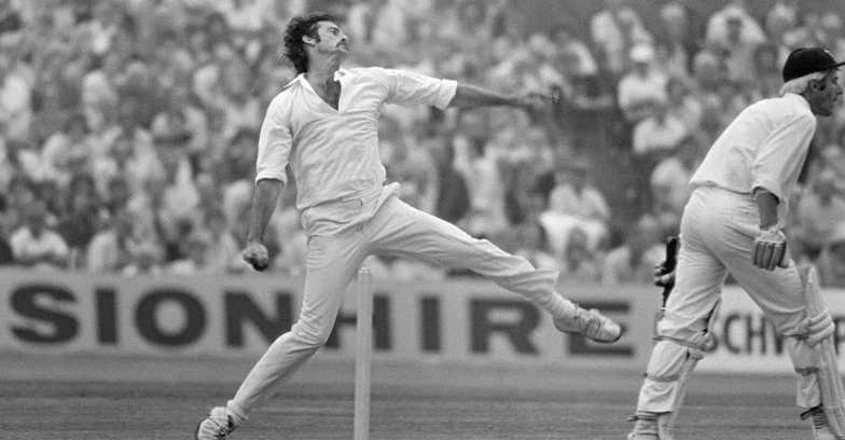Paradigm shift in Indian cricket is complete

Mail This Article
To a cricket obsessed young boy growing up in India during the 1970s the absence of a genuine fast bowler in the national cricket squad was a source of great shame. While all other Test playing countries, including our neighbours Pakistan, could flaunt bowlers who could hurl the red cherry at speeds exceeding 80 miles per hour, Indian medium-pacers were not expected to contribute anything more substantial than taking the shine off the new ball quickly so that spin bowlers could commence their operations. It was not an uncommon sight to see Bishan Singh Bedi come on to bowl as early as the third or fourth over of the innings. So complete was the overdependence on the spinners.
One should admit that India had in their ranks four of the best spinners that cricket had seen till then. The quartet comprising Bedi, Bhagwat Chandrasekhar, Erappalli Prasanna and Srinivas Venkataraghavan was, without doubt, the greatest conglomeration of spinners in a national side. Thus, from the period between mid 1960s till late 1970s, fielding three spin bowlers in the playing eleven was the norm for every Indian captain. Mansur Ali Khan Pataudi even took the gamble of playing all of them together in a Test, against England at Edgbaston, Birmingham, in 1967.
It was with the advent of Kapil Dev that India could boast, for the first time ever, about having in their ranks a fast bowler who could make opposing batsmen rush for an helmet. It was not a mere coincidence that the first series that Kapil played - against Pakistan in 1978 - also happened to be the last one when this group of splendid spinners played together. In the last Test match of that series, India played only two spinners and within a year, three of the four, except Venkat, found themselves out of the national squad.
When the history of cricket is written, the 20 years commencing from 1975 would be recorded the age of fast bowlers. Australia were the pioneers in this regard with Dennis Lillee striking up a deadly combination with Jeff Thomson, who some still believe was the fastest bowler ever to have graced the game. While Thomson rattled the batsmen with sheer speed, Lillee used his mastery over swing and lateral movement to pick up wickets. They ran through batting line-up of strong opponents such as England and the West Indies like knife slices through butter and took Australia to the pole position in world cricket.

The West Indies, led by Clive Lloyd, were at the receiving end of the speed and fury of Lillee and Thomson when they toured Australia in 1975-76. Lloyd decided to take a leaf out of the Aussies book and decided to rely on his pacers, to the exclusion of spinners. He was fortunate that his reign as captain coincided with a phase when the Caribbeans were blessed with an excess of riches in the fast bowling department. Andy Roberts, who made his debut in 1974, led the way and was followed by Mike Holding, a speedster with remarkably smooth bowling action. Colin Croft and Joel Garner joined then soon afterwards and thus the four pronged all-pace attack came into existence for the first time ever.
It was at this juncture that the World Series Cricket (WSC), promoted by Australian media mogul Kerry Packer, was launched and it succeeded in luring almost the entire West Indies side to its fold. The “Test” matches played between Australia and the West Indies as part of WSC were tightly fought ones with proceedings being led by the speedsters of the two sides. The presence of four fast bowlers, all of who exuded menace and aggression in no uncertain terms and were capable of bowling at speeds exceeding 90 miles per hour, created panic in the ranks of opposing batsmen, many of who were struck by cricket ball travelling at high velocities resulting in physical injuries and mental trauma.
Of the lot, Roberts was the senior most and the craftiest one as well. A very quiet person on and off the field, he could turn into a destroyer once he had the ball in his hand. He had the ability to bouncers at two different speeds with hardly any change in the run up and bowling action; the slower one delivered first was for making the batsman complacent while the quicker one which came soon afterwards, more often than not, caused damage either to the wicket or the body of the person holding the willow. Holding was all grace and elegance and, at his peak, the fastest bowler in the world. He was known as the “Rolls Royce” on account of his smooth approach to the wicket and easy delivery stride, which made fast bowling look like poetry in motion. Croft was the most aggressive among the four and approached the bowling crease in an unconventional manner from around the stumps. He possessed a mean leg cutter which was delivered at high speed from an awkward angle making it a particularly difficult ball for the batsman to tackle. Garner towered over the rest of his teammates and used his height to extract steeping bounce. One only has to go through the videos of the initial overs of the 1983 World Cup final to understand the problems he could pose to the batsmen by the heights that he could get the ball to climb after pitching at good length spot.
When Croft retired, his place was taken by Malcolm Marshall, who soon grew into being the most feared fast bowler of his generation. Similarly, bowlers such as Ian Bishop, Curtley Ambrose and Courtney Walsh moved into the slots vacated by the other three. But they could not get going as a quartet in the same manner as Roberts and company did. Hence, while they continued to spew venom and menace in matches inside West Indies, they were not as effective as their predecessors on pitches outside their home turf. The arrival of better quality protective equipment along with restrictions on number of bouncers and demands for meeting prescribed over rates further blunted their efficiency. The slide of the West Indies as the premier cricketing side in international cricket, especially in Tests, also started at this time, when their pace battery stopped delivering the results in the manner they used to, in the past.
Other teams had also tried out the formula of four pacemen occasionally, the most prominent being South Africa, who could boast of fast bowling all-rounders such as Brian McMillan and Jacques Kallis. However, the reemergence of spin bowling as a potent force during the 1990s with champion performers such as Shane Warne, Muttiah Muralitharan and Anil Kumble hogging the centre stage, forced captains to retain spin bowlers in the playing eleven. Thus the practice of selecting four fast bowlers gradually got shoved into the background in Test cricket.
During this period India went through a slow process of transition from an all-spin bowling attack to one dominated by fast bowlers. Kapil Dev, after an initial phase when he had to bear the burden of Indian bowling attack on his shoulders, was well supported by Chetan Sharma and Manoj Prabhakar in his later years. After Kapil came Javagal Srinath, who was followed by Zaheer Khan, a left-arm pacer with excellent control over length and movement off the seam. S Sreesanth came in to the side in early 2000s and he was followed by Ishant Sharma, who leads the present crop of fast bowlers. The spread of the roots of the game to all parts of the country and the establishment of training and fitness centres even in small towns ensured that a steady stream of fast bowlers emerged on the cricketing horizon of the country. A heartening quality of all these youngsters is that they are able to bowl at speeds exceeding 80 miles per hour on a consistent basis.
In this regard special mention must be made about the efforts put in by the MRF Pace Foundation, which was set up in Chennai during the 1980s, with Dennis Lillee as the chief coach to train fast bowlers. This foundation recruited raw talent from different corners of the country and imparted the latest techniques to them, both on fast bowling and physical fitness. Many of the fast bowlers who played for India from early 2000s had cut their cricketing teeth in the pitches of this foundation, which also proved to be trendsetter of sorts with many more similar organisations coming up. However, an unfortunate but natural corollary to this development is the fact that spin department has shrunk in size. Apart from Kumble and Harbhajan Singh, and Ravichandran Aswin and Ravindra Jadeja at present, none of the spin bowlers could create much of an impression at the international level.
Ishant, Jasprit Bumrah, Umesh Yadav and Mohammad Shami might not evoke the same feelings of fear and apprehension that Roberts, Holding, Croft and Garner generated on the opposing batsmen. The impact created by them might not be of humungous proportions, both in the short as well as the long term. It should also not be forgotten that Aswin would, in all likelihood, have played in the ongoing Perth Test against Australia had he not been injured. But when they all bowled together in a Test match last Friday, without any frontline spinner to support them, it signalled completion of the process of evolution of Indian cricket from a nation bereft of fast bowlers into a cricketing superpower who possess the capacity and confidence to take on the challenges posed by any opponent on equal terms, without any alarm or anxiety.
(The author is a former international umpire and a senior bureaucrat)


